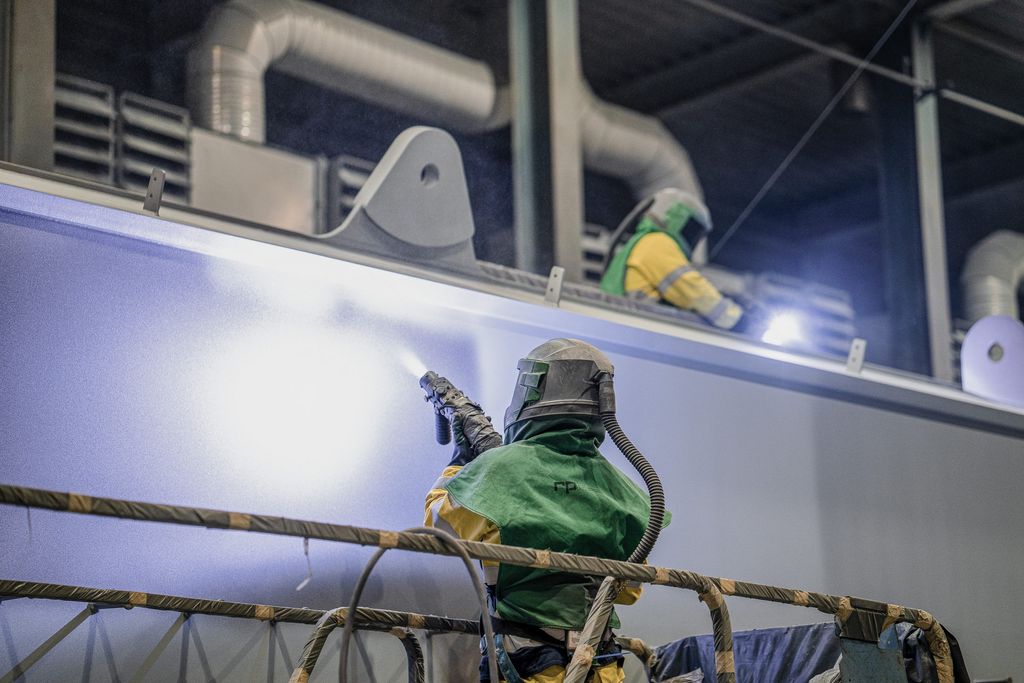Main navigation
Specially designed for you, this tool will help you estimate, step by step, the thickness of the coating to apply and the quantity fo wire to use in all your projects, whichever corrosion classes you work with and the type of wire selected.

* The figure given above is purely theoretical and is given for information only. It therefore does not engage Zinacor S.A. in any way. In practice, you will have to take into account many technical, design and human factors that will increase the quantity to be used.
Get in touch helps us to understand you better
Rue de Chênée 53 (entrée B)
B-4031 Angleur- Belgique
Telephone +3243666471
Get in touch helps us to understand you better
- ISO 2063 Standard
-
Thermal spray with zinc and zinc-aluminium
Thermal spray with zinc and zinc-aluminium

Why use zinc ?
Zinc will protect in more than one way:
- like paint and galvanising, zinc will form a barrier layer;
- zinc will then oxidise and form a patina layer providing additional protection;
- zinc and zinc-aluminium have an additional advantage: zinc will provide cathodic protection, which means that in case of coating damage down to the steel, zinc will be sacrificed and thus prevent the steel from corroding.
For more details: zinc protection
Why use zinc-aluminium
Zinc-aluminium metallising coating combines the advantages of the two metals.
Zinc-aluminium maintains its cathodic protection which is specific to zinc, and with the addition of aluminium, it provides high chemical resistance against aggressive environments.
Advantages of metallising using zinc-aluminium rather than pure zinc:
- longer anti-corrosion protection than with pure zinc (salt spray test as per the ISO 9227 standard, and SO2 test as per the ISO 6988 standard);
- more economical:
- for the same surface to be treated and the same coat thickness, about 30% less wire is required. This is due to the much smaller volume of metallising residues,
- higher covering rate, and thus a less expensive labour cost per m²,
- total cost for metallising 1 m² certainly lower than when using pure zinc,
- easier to use for the coating operator: since the metallising residue volume is smaller, there are fewer dusts in the spray booth.
For more details: zinc-aluminium protection
Sealing and duplex system
In order to increase resistance to corrosion, zinc or zinc-aluminium metal coats are often followed by a sealer layer or a paint system, the duplex system.
- Paints containing acrylate, epoxy and polyurethane resin, are suitable. It is recommended to read the manufacturer’s specifications in order to assess suitability for every individual application.
- Paints containing alkyd resins drying in the open are not recommended over zinc coats. They lead to the formation of blisters and peeling.
- In the case of zinc and zinc-aluminium metal coats, the first sealer layer serves to close the pores as much as possible. In order to penetrate deep into the pores, paint has to be properly diluted. Due to this penetration, the sealer layer does not contribute to the total thickness of the duplex system.
- In order to prevent a deposition of oxides or other contaminants into the pores of the metallised coat, the sealer layer has to be immediately applied after metallising, as soon as possible. The period depends on the atmospheric conditions, and in any case has to be applied before any condensation.
Technical advices
Contact


We use cookies to improve your online experience.
For more information, visit our privacy policy


